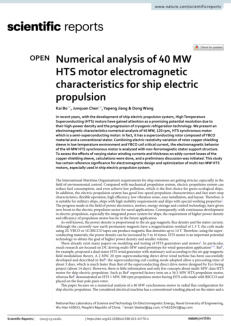Vessel design, maintenance, & management 2018 - 2023

Author: Cdr (Dr) Nitin Agarwala
This paper discusses the developments made for the
dynamic positioning system over the years and traces the
evolutions that are helping in the conceptualization of
autonomous ships.

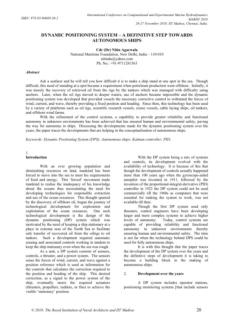

Authors: Anil Kumar D, Manoj C V, Hariprasad S A,
Rakshith D, Poornachandra N U, & Mahalakshmi P
This paper discusses the control algorithm for precise track
keeping even in the presence of sea disturbances.

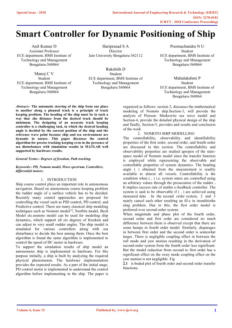

Author: Hamid Zeraatgar, M. Hossein Ghaemi.
Many research works and related industries currently
address the reduction of greenhouse gas emissions in
shipping. There are many existing and visionary
technologies and ideas, which are conceptually defined
or practically realized. This goal can be achieved in
different ways, and reducing fuel consumption is one of
the effective methods. In these circumstances, this study
aims to analyze the possibility of fuel consumption
reduction by using an alternative control strategy
for low-speed marine diesel engines that would consider
the interactions between hull, propeller, and main
engine.

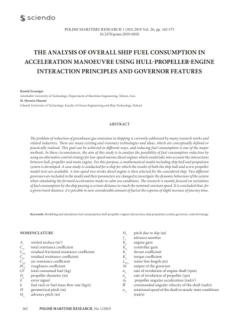

These Guidelines deal with invasive plants, animals,
disease agents, and other organisms in marine,
freshwater, and terrestrial environments and their impacts
on the environment, biodiversity, ecosystem services,
human health, economies, and society. All of the main
thematic areas and their objectives are required to
manage the invasive species threat comprehensively.
These Guidelines reflect and are compatible with relevant
international conventions and standards and are intended
to assist planners and practitioners in meeting accepted
standards and best practices.

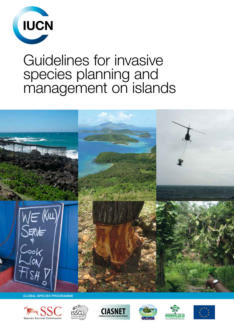

Author: New Zealand Government
This Craft Risk Management Standard (CRMS) specifies the
requirements for management of biofouling risk
associated with vessels (sea craft) that are entering New
Zealand territorial waters.

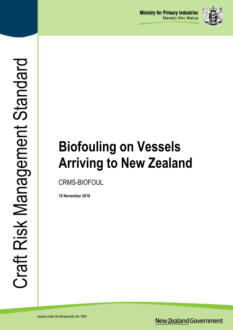

Author: New Zealand Government
This guidance document provides best practice guidance,
information and recommendations to help operators and
persons in charge of vessels to meet the requirements of
the Craft Risk Management Standard (CRMS) for
Biofouling on Vessels arriving into NZ (referred to in this
document as the “biofouling standard”).

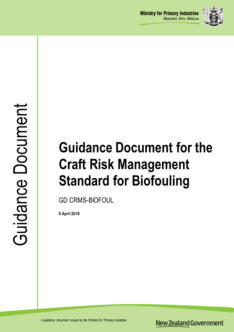

Author: Government of new Zealand
The IMO (International Maritime Organisation) (2011)
Guidelines for the Control and Management of Ships’
Biofouling to Minimize the Transfer of Invasive Aquatic
Species contain examples of current best practices.
Following these will be considered as compliance with
New Zealand’s requirements. The guidelines include
that vessels should have a vessel-specific biofouling
management plan (notably including a hull
maintenance program), documentation, inspections
and antifouling systems, a record of actions under the
plan, and, where relevant, design and construction to
reduce areas prone to biofouling growth.

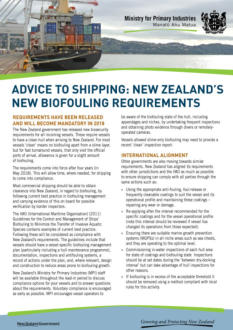

Authors: B.T. Watermann & K. Broeg for the European
Regional Devellopment Fund.
Due to its characteristics as a semi-enclosed brackish water
sea with a shallow connection to the North Sea and
heavy maritime traffic, the Baltic Sea already faces strong
anthropogenic pressures and impact. Effects are, besides
others, eutrophication, pollution with hazardous
substances, and the introduction of invasive species. Thus,
this Best Practice Guide aims at providing information and
guidance for effective biofouling management strategies
suitable for the Baltic Sea Region based on international
and regional experiences and research.

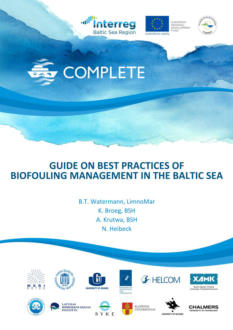

Authors: Pedro Almeida Vinagre, Teresa Simas, Erica Cruz,
Emiliano Pinori, & Johan Svenson.
Abstract:
Biofouling is a significant problem shared among all
maritime sectors employing submerged structures where
it leads to substantially increased costs and lowers the
operational lifespans if poorly addressed. Insight into the
ongoing processes at the appropriate marine locations is
key to effective management of biofouling. Of specifc
concern for the marine renewable energy (MRE) sector is
that information on biofouling composition and
magnitude across geographies is dispersed throughout
published papers and consulting reports. The present
work describes a European biofouling database to
support the MRE sector and other maritime industries to
enable rapid access to relevant key biofouling events.

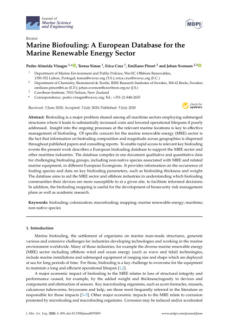

Published by the Institute of marine engineering, Science
& technology, & the International paint and printing ink
council.

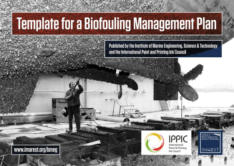
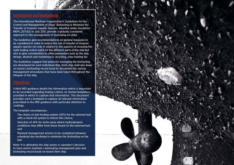

This Guide outlines the ABS requirements for the design
and survey of accommodation modules installed
onboard ABS-classed Mobile Offshore Drilling Units
(MODUs), and Mobile Offshore Units (MOUs),
Offshore Installations (fixed or floating), Steel Barges, and
Steel Vessels. The Guide may be voluntarily
applied to other type of portable modules.

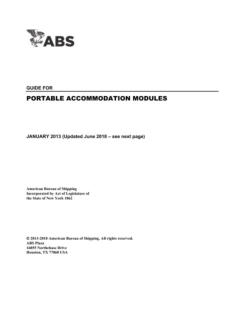

This Guide sets forth requirements for the optional
underwater noise notation UWN (Type) and UWN+
(Type). It is applicable to self-propelled commercial and
research vessels.

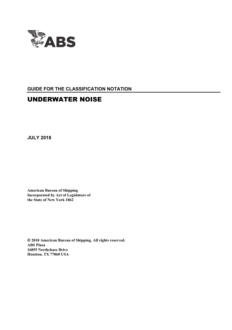

This Rule Note gives the certification scheme of materials
and equipment (products) intended to be fitted on board
units to be classed or classed with the Society in
accordance with the relevant requirements of the
Society's rules for classification.

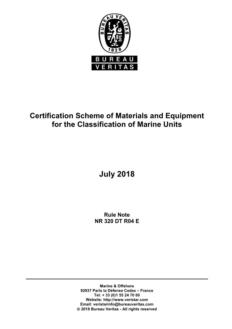

The Classification process consists of:
a) The development of Rules, Guides, standards and other
criteria for the design and construction of marine vessels
and structures, for materials, equipment and machinery,
b) The review of design and survey during and after
construction to verify compliance with such Rules,
Guides, standards or other criteria,
c) The assignment and registration of class when such
compliance has been verified, and
d) The issuance of a renewable Classification certificate
with annual endorsements valid for five years.

- 2020
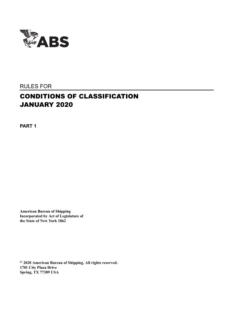


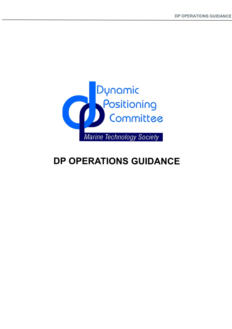

Requirements of these Rules are applicable to crew boats
of less than 500 GRT, with hull made of steel, aluminium
or composite materials, and proceeding in the course of
their voyage not more than four hours at operational
speed from a place of refuge.

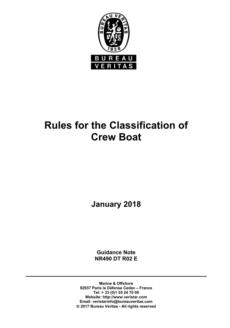

This Rule Note covers ships able to sail in planning mode
in adapted sea state at high speed (light ship), or in
planning mode in adapted sea state and speed, and in
displacement mode otherwise (bi-mode ship), or in
displacement mode only (conventional ship).

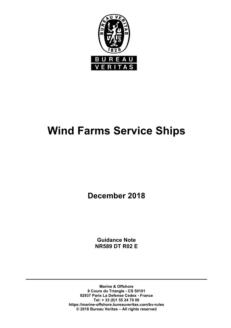

Author: Alam Baheramsyah, Juniarko Prananda, Darwin
Setiyawan
A limitation of freshwater supply in a lifeboat during sea
survival situation caused by a ship accident could
endanger survivor’s life. An availability of freshwater is
critical for people to survive during search and rescue
time. Therefore, it is very important to have a device that
can produce freshwater continuously in a lifeboat.

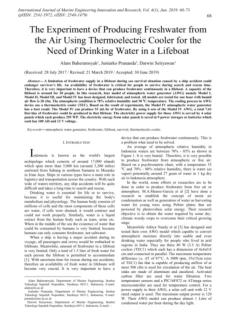

Authors: Victor A. Dubrovsky
Some civil engineers apply the pre-stressed structures for
notable decreasing of structure mass.
Such structure consists of two parts: usual structure from
usual material and added details for high-tensile material,
usually ropes, which pre-stress the main structure.

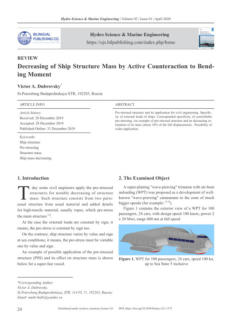

Authors: Luofeng Huang, Sasan Tavakoli, Minghao, Azam
Dolatshah, Blanca Pena, Boyin Ding, and Abbas
Dashtimanesh
The launch of lifeboats is commonly completed through
freefall dropping from a considerable height, where the
lifeboat is released from an inclined skid so that it can
obtain a forward speed after being launched. The drop is
followed by a water entry process that can induce high
impact forces on the hull, which gives a significant risk of
structural damages. Ascertaining the water entry impact is
therefore a key step of lifeboat design.

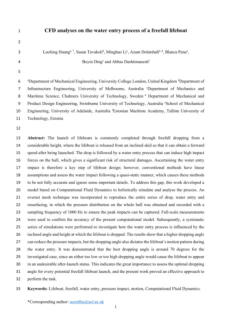


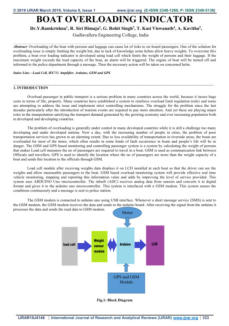

Authors: Dawud Shibghotulloh, Samsul Maarif, Eko Adhi
Setiawan
The boundary of this research is to calculate the average
cost of energy from boat lighting to energy sources using
the homer simulation method. The purpose of this study is
to compare the energy consumption generated by
electric boat (e-Boat) and conventional fishing boats.

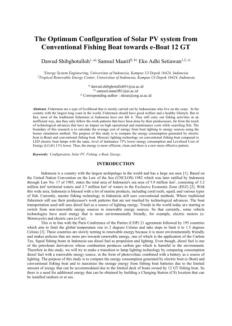

Authors: Ulanbek Auyeskhan, Namhun Kim, Chung, Soo
Kim, ran Van Loi, Jihwan Choi, Dong-Hyun Kim
The design freedom provided by Additive Manufacturing
(AM) enables the part consolidation (PC) of sophisticated
mechanical assemblies. However, PC has been mainly
performed for static components in assemblies with
nonmoving parts. In this regard, a new approach to
assembly-level Design for Additive Manufacturing (A-
DfAM) considering an industrial lifeboat hook assembly
with a functionally dynamic system is proposed

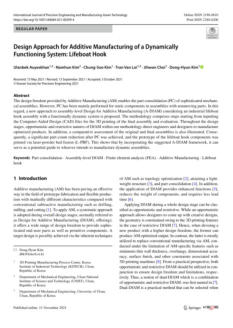


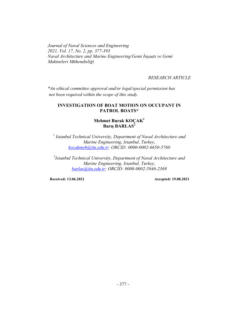

Authors: Haiwen Tu 1, Lin Mu, Kai Xia, Xiaodi Wang, and
Kui Zhu
The lifeboat is one of the most important life-saving
equipment for escaping at sea when a ship is abandoned
in an extreme emergency. An accurate drift model can
help rescuers find the drift position of the lifeboat in the
shortest time, thus improving the efficiency of marine
search and rescue (SAR) at sea and ensuring the safety of
wrecked people. The purpose of this paper is to
investigate the drift characteristics and to develop an
accurate drift prediction model for the open lifeboat.

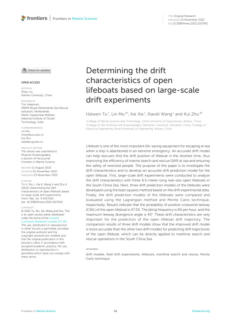

Publisher: Oil management International Marine Forum
Unsafe events in the offshore marine industry have
indicated that deck cargo operations pose a high safety
risk with the following main contributing factors:
• Large amounts of water on deck (green water).
• Unsecured cargo on deck.
• Personnel in the line of fire.
• Lack of combined operations communications.
These events highlight the need to provide guidance and
align stakeholders across the industry to increase safety,
which is the purpose of this document.

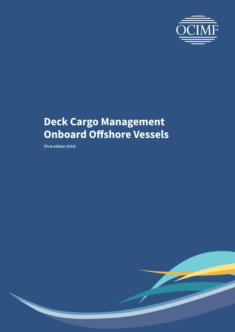


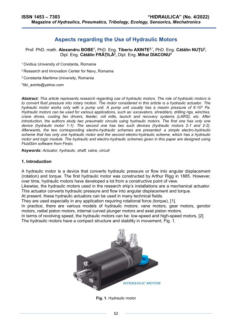

Publisher: International Maritime Organization (IMO)
Abstract:
The Maritime Safety Committee, at its 102nd session (4 to
11 november 2020), having considered a proposal by the
Sub-Committee on Ship Design and Construction, at its
sixth session, and recognizing the importance of
inspection and maintenance of mooring equipment
including lines, approved the Guidelines for inspection
and maintenance of mooring equipment including lines,
as set out in the annex.

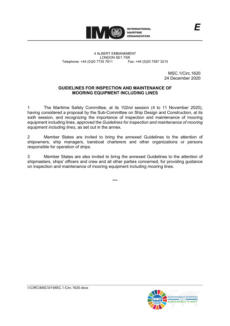

Authors:
Heikki A. Nurmi, Cunming Yu, Dmytro Toptunov, Robin
H.A. Ras, and Ville Jokinen
Friction reduction is typically done by lubrication with
petroleum-based oils, while technology focus is shifting
toward environmentally-friendly green lubrication. Lowest
friction coefficients with water-based lubrication have
previously been achieved with smooth surfaces such as
silicon carbide and silicon nitride or polyzwitterionic
polymer brushes. This document describes a novel
concept for green lubrication using a bilayer of water and
ambient air acting as the lubricant between a hydrophilic
and superhydrophobic surface.

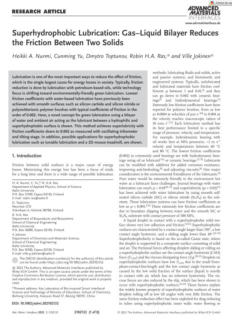

Authors:
Conghui Duan, Jianping Yin, Zhijun Wang, Zhiwei Hao
To study the impact of shallow water explosion shock
waves on a ship and the overpressure distribution law
under different burst points and different explosive
quantities and charge, the TNT column bare charge is
selected, based on LS-DYNA nite element software; the
underwater explosion model is created, and the
numerical simulation study of underwater explosion
under different burst points is carried out, and the
correctness of the nite element model is verified by
comparing with the empirical formula.

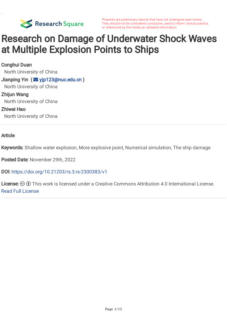

Authors: Alpaslan Tatlısuluoglu, Serdar Beji)
Underwater explosions that threaten the hull integrity and
proper operation of navy ships’ systems and subsystems
are considered from the viewpoint of damage estimation.
The commercial code LS-DYNA with the Arbitrary
Lagrangian-Eulerian numerical technique is used to
analyze the shock effects on structural components of a
ship-like form for three different scenarios. Computed
maximum permanent deformations are matched with the
corresponding keel shock factor (KSF) values for searching
a functional relationship of a linear form.

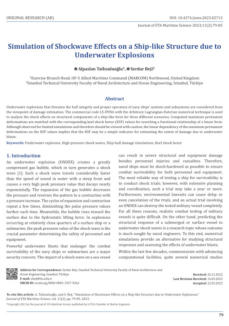



Authors:
Sergiy Rogalsky , Olena Moshynets, Oleg Dzhuzha,
Oksana Tarasyuk, Anastasiia Hubina, Alina Madalina
Darabut, Yevheniia Lobko, Iryna Morozovska, Oleksandr
Protasov, Jean-Francois Bardeau
This document details a novel water-insoluble cationic
biocide that has been assessed as a prospective
antifouling agent for commercial alkyd paint.

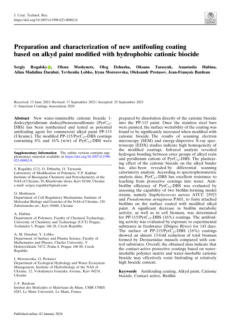
Authors: Dr.Y.Ramkrishna, R. Siri Himaja, G. Rohit Singh, T.
Kasi Viswanath, A. Kavitha
Overloading the boat with persons and luggage can
cause a lot of risks to onboard passengers. One solution
for the overloading issue is simply limiting the weight, but
due to lack of knowledge, some helms allow heavy
weights. To overcome this problem, a boat overloading
indicator is developed using a load cell, which limits the
weight of persons and their luggage. If the maximum
weight exceeds the load capacity of the boat, an alarm
will be triggered. The boat's engine will be turned off, and
informed to the police department through a message.
Then, the necessary action will be taken on the
concerned helm.
Authors: Baris Barlas
Occupants in high-speed patrol boats are subject to
impact forces due to various boat motions. These impact
forces should be precisely calculated and accounted for
when designing seats for occupants. Hull design and
cruising speed are the most critical parameters that cause
shock and impact on the boat during the journey. In
addition, seat design and material also have a major effect
on the impact level sensed by the occupant. This study
uses Altair software (Hypermesh and Radioss) to build a
sample Computer Aided Engineering (CAE) seat and
occupant model for patrol boats.
Authors: Alexandru Bobe, Tiberiu Axinte, Catalin Nutu,
Catalin Fratila, Mihai Diaconu.
This article discusses the use of hydraulic motors to
convert fluid pressure into rotary motion. Hydraulic motors
can be used for various applications, such as excavators,
shredders, drilling rigs, winches, crane drives, cooling fan
drivers, feeders, roll mills, launch and recovery systems
(LARS), etc. The authors also study two pneumatic circuits
using hydraulic motors.
The DP Committee is a non-profit organization that
promotes a greater international understanding of
Dynamic Positioning and related issues.
The documents published by this organization should be
considered references.
They can be accessed by clicking on the following links:
Website:
https://dynamic-positioning.com/about-us/

Authors: Panpan Zhang, Lin Wu, Lifeng Bao, Bo Wang,
Hui Liu, Qianqian Li, and Yong Wang
This study discusses the effectiveness of gravity
disturbance compensation in improving the positioning
accuracy of high-precision inertial navigation systems
(INS). It investigates the error and frequency characteristics
of INS caused by gravity disturbances and introduces a
method for implementing gravity compensation using
data from a high-precision satellite altimetry marine gravity
field model. The results demonstrate the impact of gravity
disturbances on INS performance and confirm the
effectiveness of the proposed compensation method
through dynamic shipborne testing, showing a significant
improvement in positioning accuracy.

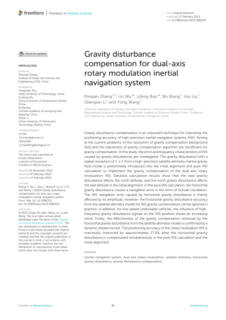

Authors:
F. Mannacio, A. Barbato, F. Di Marzo, M. Gaiotti, C.M.
Rizzo, M. Venturini
This text discusses the challenges and methodologies
related to verifying shock resistance in naval ship
foundations to provide guidelines for shock foundation
design by comparing numerical simulations with
experimental data, highlighting the importance of using
both approaches to enhance understanding of complex
phenomena.

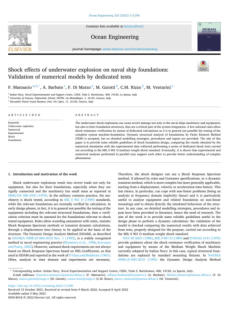








Click on the
octopus to return to
the top of the page


14 - The impact of propulsion factors on vessel performance in
waves
Authors: Bhushan Taskar, Pelle Bo Regener, and Poul
Andersen
This study examines the impact of waves on vessel
performance, considering four different ships and
simulations for a transpacific journey. Results show
predicted energy consumption varies from -12% to +4%,
with propulsion efficiency significantly affected. It
emphasizes the importance of considering these factors
for accurate vessel performance prediction.
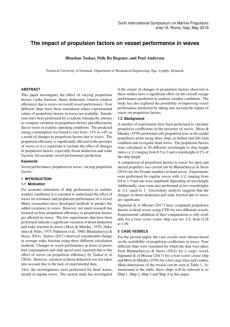


15 - Power Models and Average Ship Parameter Effects on Marine
Emissions Inventories.
Authors: Isabela N. Brown, Michael F. Aldridge
Shipping contributes 2.8% of global greenhouse gas
emissions, with projections of a 50% to 250 percent
increase by 2050. Marine emission models estimate ship
propulsive power using various methods, including the
Propeller Law and Automated Identification System (AIS)
data. This paper examines the effects of complex and
simple propulsive power models on calculating baseline
emissions inventories with unique vessel parameters.
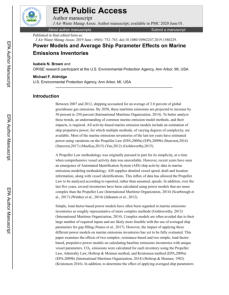


18 - The dual nature of the dead-water phenomenology: Nansen
versus Ekman wave-making drags
Authors: Johan Fourdrinoy, Julien Dambrine, Madalina
Petcu, Morgan Pierre, and Germain Rousseaux
This study explores the higher drag experienced by ships
in stratified fluids, focusing on two wave-making resistance
phenomena: Nansen wave-making drag and Ekman
wave-making drag. The study reveals that these speed
variations are due to an internal dispersive undulating
depression during initial acceleration, acting as a bumpy
treadmill. The study also demonstrates that this oscillating
regime is temporary, and that lateral confinement can
exacerbate oscillations and modify the asymptotic speed.
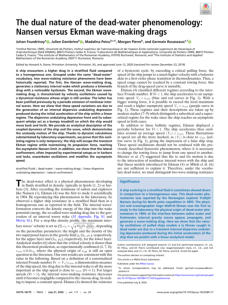



24 - Assessment of the Propulsion System Operation of the Ships
Equipped with the Air Lubrication System
Authors: Mariusz Giernalczyk, and Piotr Kaminski
This paper evaluates the effectiveness of a ship's hull air
lubrication system in reducing drag and fuel consumption.
Analyzing existing reports and operating parameters, the
authors found that while the system offers advantages, its
effectiveness on modern passenger ships is not clear-cut.
The study also suggests conditions for increased efficiency.
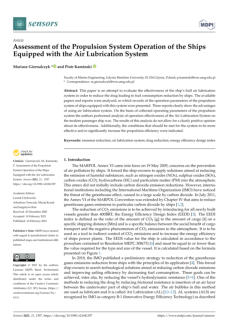


25 - Evaluation of the environmental and economic impacts of
electric propulsion systems onboard ships: case study
passenger vessel
Authors: Nader R. Ammar, & Ibrahim S. Seddiek
The International Maritime Organization (IMO) has
highlighted the significant role of maritime transport in
global greenhouse gases. This paper investigates the
environmental and economic impact of electric
propulsion systems, comparing diesel electric (DE) and
combined gas turbine electric and steam (COGES)
systems. Results show COGES is more energy efficient and
cost-effective, with a life-cycle cost-effectiveness of 612,
1970, and 6 $/ton for NOx, SOx, and CO2 emissions.
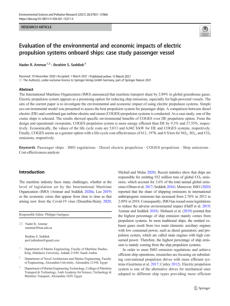



26 - E-Engine for a Long-Tail Boat, an Application in ASEAN
(Association of Southeast Asian Nations)-Design and
Comparison with Internal Combustion Engine.
Authors: Vu Tran Tuan, Phuong Nguyen Huy, Surasak
Phoemsapthawee, and Sangkla Kreuawan
This article proposes an E-propulsion system for ASEAN
long-tail boats, offering low noise, zero-emission, and
regenerative braking. The design, achieved through finite
element analyses and thermal simulations, outperforms
the Honda GX270 in volume, weight, torque, and power.
A full-scale prototype was manufactured.
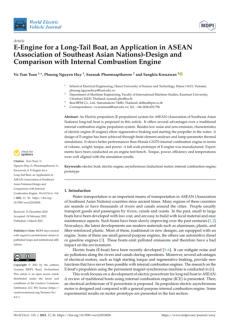
Authors: Calvin Corey, Gene Castles, Clive Wilgress-Pipe,
& Heejong Moon
Naval vessels often operate during low-speed activities,
causing propulsion system inefficiencies. Modern vessels
incorporate electric propulsion systems like Integrated
Electric Drive (IED) and Hybrid Electric Drive (HED) to
mitigate these losses and increase range and survivability.
This paper compares and contrasts these systems for naval
vessels and proposes an adaptation for the CVX-Class
aircraft carrier.


29 - Electric Propulsion for Modern Naval Vessels
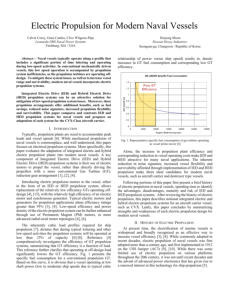



32 - Validating propulsion system optimization procedure for a
carrier vessel.
Authors: M. Lobachev, V. Novoselov, Yu. Polyakov, A.
Rudnichenko, T. Saifullin, A. Taranov
The study optimizes the propulsion efficiency of Project
1594 ships using Russian software package pSeven and
Siemens Star CCM+ software. The study generates three-
dimensional parametric models for the propeller and hull,
and obtains hydrodynamic parameters using CFD
methods. The results show a new bow shape with lower
wave-making resistance and higher propeller efficiency.
The optimized system shows a growth in speed in
different conditions.
(Doc. written in Russian)
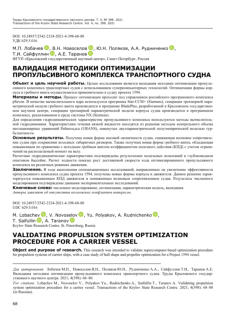



36 - Film-Thickness Identification Method and Lubrication
Characteristic Experiment of Full-Size Water-Lubricated Stern
Bearing under Offset Load

Authors: Jinjun Li, Wu Ouyang, Qilin Liu, Zhuo Zhang,
and Yan Zhang
This paper investigates the lubrication status of a water-
lubricated stern bearing (WSB) under offset load using a
full-size experiment. The study establishes a bearing film-
thickness identification model, identifying dynamic film
thickness data in the bearing section. The model's
maximum identification error is less than 7%, and the
lubrication state changes dynamically with speed. The
research provides insights for determining the shaft
system's service life.
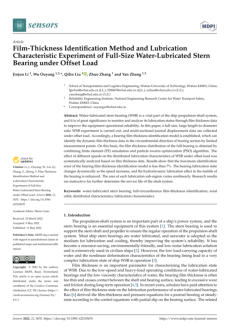



37 - Life-Cycle Assessment and Costing of Fuels and Propulsion
Systems in Future Fossil-Free Shipping
Authors: Fayas Malik Kanchiralla, Selma Brynolf, Elin
Malmgren, Julia Hansson, and Maria Grahn
This study evaluates potential decarbonization solutions
for future ships, focusing on energy carriers like electrolytic
hydrogen, electro-ammonia, electro-methanol, and
electricity. The results show promising measures to reduce
maritime GHG emissions with low-carbon-intensive
electricity. However, the carbon abatement cost ranges
from 300 to 550 €/tCO 2 eq, with trade-offs for
environmental impacts. Electro-ammonia in fuel cells is
effective, followed by the HyMethShip concept. Major
incentives and policy measures are needed.
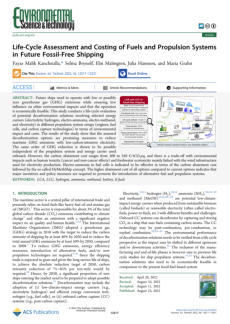



38 - Lifecycle Environmental Benefits with a Hybrid Electric
Propulsion System Using a Control Algorithm for Fishing Boats
in Korea
Authors: Seongwan Kim, Hyeonmin Jeon, Chybyung
Park, and Jongsu Kim
Korea's government is promoting the development and
distribution of environmental vessels, including electric
propulsion systems and hybrid systems. A case study
using a battery hybrid system reduced carbon dioxide
emissions by 7.6% and 10.7% compared to conventional
diesel-powered ships. The study confirmed that the hybrid
system is eco-friendly from the energy production stage,
but further research is needed to reflect the aging trend
of the entire fleet and create a detailed category
classification.
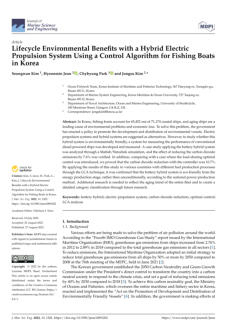



43 - Battery-Free and Real-Time Wireless Sensor System on Marine
Propulsion Shaft Using a Wireless Power Transfer Module
Authors: Young Chul Lee, and Van Ai Hoang
This paper presents a wireless sensor system (WSS) that
integrates an inductive wireless power transfer module for
real-time monitoring of rotating shaft status in ships. The
system has a power capability of 1.75 W and 75%
efficiency. The system integrates four sensors on a 200mm
shaft, demonstrating real-time monitoring without a
battery.
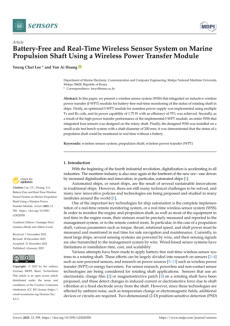

Author: Qiuwen Wang , Hu Zhang, and Puxin Zhu
The use of nuclear energy for merchant ships is a
potential solution to promote maritime decarbonization
and sustainable shipping. However, concerns about
environmental risks from accidents and machinery failures
exist. This research aims to analyze existing regulations
and identify potential solutions to mitigate the impacts of
radioactive marine pollution on the international
community.


44 - Using Nuclear Energy for Maritime Decarbonization and
Related Environmental Challenges: Existing Regulatory
Shortcomings and Improvements
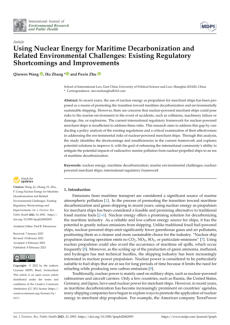



47 - An SE-Based Maritime Vessel Development Framework for
Changeable Propulsion Systems
Authors: Brendan Sullivan, and Monica Rossi
The International Maritime Organization (IMO) aims to
reduce greenhouse gas emissions from vessels by 40% by
2030. This is a significant challenge, as regulations are
reducing ship life spans and economic value. To address
this, the IMO recommends the Energy Efficiency Design
Index for new vessels, which encourages innovation and
continuous technical development. This paper presents a
conceptual framework for maritime vessels to achieve this.
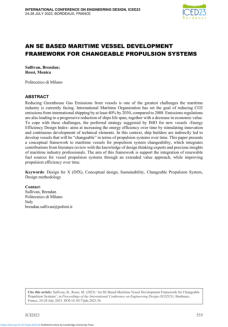



48 - Next Generation Electric Propulsion for 5000 Ton Combatant
Vessel
Authors: Calvin Corey, Gene Castles, Clive Wilgress-Pipe,
Heejong Moon
Integrated Electric Drive (IED) is a promising solution for
next-generation electric propulsion applications, as it
decouples ship propulsion from conventional engines.
This paper presents two IED propulsion systems for a
5,000-ton frigate class vessel, highlighting its benefits and
potential drawbacks. The approach can be applied to
various naval ships, including mine sweeper hunter and
aircraft carrier. The focus is on combatant vessels
operating at low speeds.
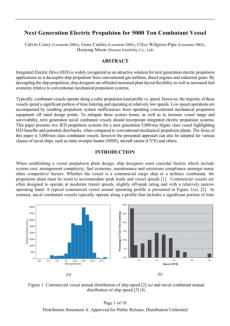

Author: Kai Bo, Junquan Chen, Yapeng Jiang, & Dong
Wang
This study presents an electromagnetic characteristics
numerical analysis of a 40 MW, 120 rpm, semi-
superconducting HTS synchronous motor. The analysis
considers the electromagnetic behavior of the motor,
analyzing the effects of varying stator winding currents
and thickness on eddy current losses of the copper
shielding sleeve. This study has significant implications for
electromagnetic design and optimization of multi-ten MW
HTS motors.


50 - Numerical analysis of 40 MW HTS motor electromagnetic
characteristics for ship electric propulsion
